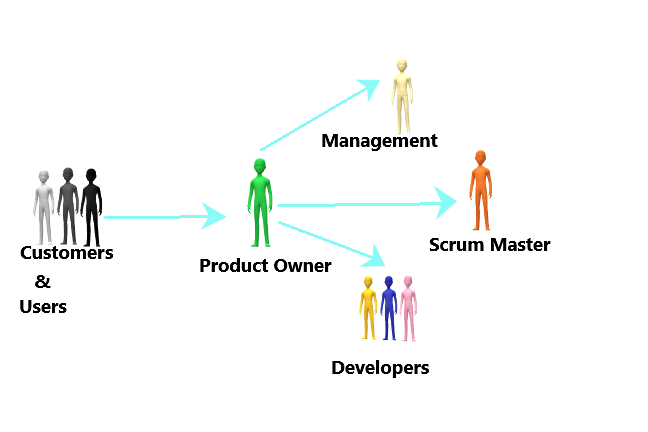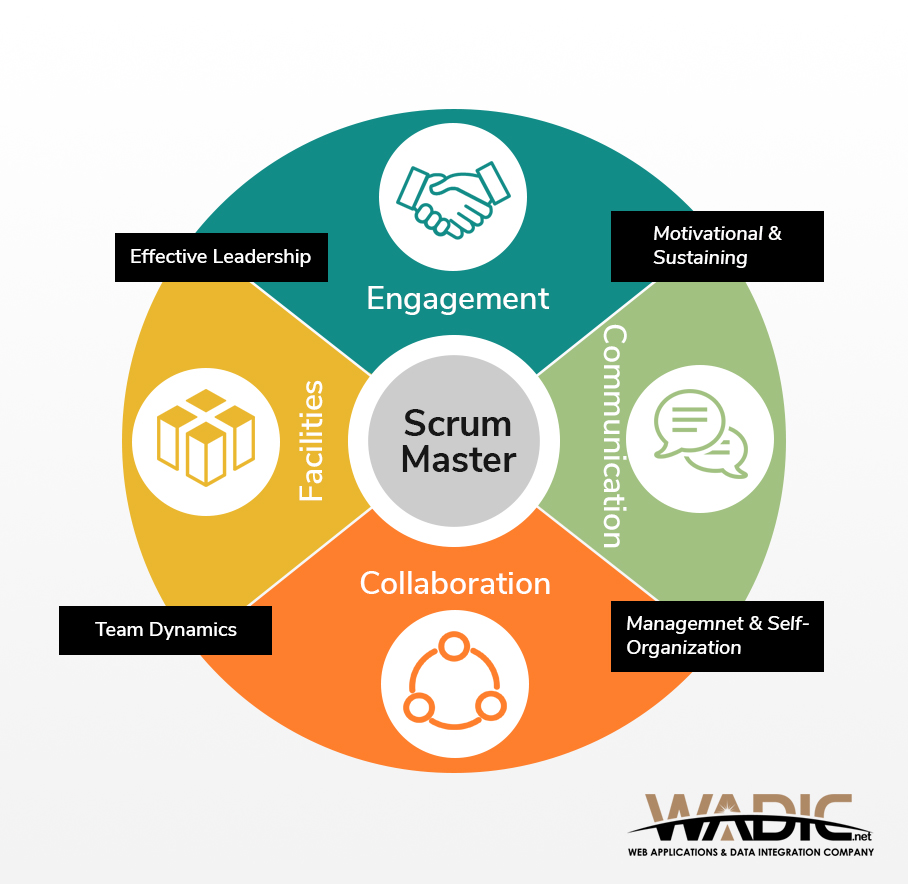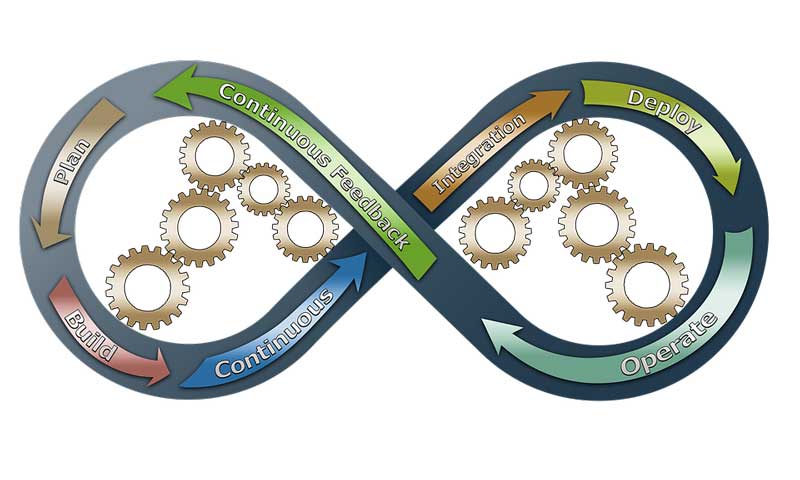Tech evolution is daily practice revolutionizing the project management methodologies. The day to day editions is replacing one methodology over the other. There isn’t the 100% best solution in a singular project methodology, you can choose to mix Waterfall Agile Scrum Project Management Methodologies with combination best suiting to your project development.
Some of these are supportive of smaller projects with easy management, and sequential process like waterfall project management methodology. Kan-ban is very efficient in supporting unlimited changes with flexible methods. Scrum is good to go for complex software, product development and implement agile but within the fixed iteration.
Waterfall Methodology
Waterfall project management is a flexible one to go with as it requires no prior knowledge and training to begin the projects. It has sequential patterns which make it easy to follow waterfall methodology. Waterfall methodology is also a rigid model; the specific deliverable and reviews make it easy to manage and develop. Waterfall model suits best for the smaller projects where requirements are clear and defined.
Every step in the waterfall has a start and end point hence it’s flexible to share progress with stakeholders and customers. The focused pre-planning on requirements and design before writing a code reduces the risk of errors and delay.
The sequential procedure requires proper documentation for every phase which results in an enhanced understanding of the logic behind the code and evaluation. This sequence creates proper trails for the stakeholder to have an insight into a specific phase.
The less productive perspectives of Waterfall Methodology
No Easy Change: Once an application is on the testing stage, it is very likely impossible, time taking and expensive to go back and fix it according to the requirements. Sometimes you need to start again to implement any changes.
The software cannot be delivered until late: The project has to go under through planning and several initial stages before the actual development begins. The customer cannot see the actual picture of the project until the working software is in a late-life-cycle. If anything is not according to the requirements, the entire procedure would start from the start.
Risk Involving and challenging development: Sometimes the customers and stakeholder are not certain about their requirements in the start, and waterfall Software Development cannot begin without gathering all relevant details and requirements. That’s is why waterfall does not offer much space for customer’s feedback and the customized final product. It is also a not viable model for complex, big and object-oriented project development.
Agile Methodology
The Agile Software Development process is an iterative approach which is open to the required changes and encourages constant feedback from customers. Agile project management methodology is based on cross-functional teamwork on the iterations of a product over a period of time to ensure the prioritized quality of the customer product.
The principles of agile methodology
- The maximum contentment of the customer and the continuous delivery of valuable software production.
- The unified teamwork with the customer, team leads, project managers and developers to pay continuous attention to technical excellence and design’s agility.
- The most efficient method of delivering information to and within a development team is to have good communication.
- It welcomes the alterations at every step of development, to measure the progress of the agile project.
- The strong architecture, requirements and the designs emerge from self-organizing teams.
- At regular intervals, meetings, and testing, the team can prone to more effective methodologies to adjust the work lead accordingly.
- Develops a healthy environment for the team by giving them mutual support and freedom with their work.
- Agile methodology ensures sustainable development. The sponsors and the developers are able to maintain a smooth pace towards the development and execution of the project.
Advantages of Agile Methodology
-
Continuous Change and Evolving
The shorter planning cycles developed and continuously tested to the successful implementation of the change. The continuous change computes the backlog and makes the development more refine.
-
Client’s Feedback
The customers can see the progress on the developing activities, share their own input, and removes ambiguities about their demands by the time. Their timely feedback quickens the work speed.
-
Customized and Product Value
With easy to manage and smaller iterations allows the agile team to concentrate on quality-oriented development, testing, and collaboration. The regular weekly meetings evaluate all undergoing process to assure it according to a customized end-user product. The continuous evaluation and testing eliminates bugs and offers solutions with the help of mutual efforts of developers and team leads.
-
Robust Unison among the team
Agile methodology is performed under the mutual efforts of all team members. The teamwork enhances the work ability, an individual’s capability, and product efficiency.
Agile Scrum Project Management Methodologies
Agile project management methodology is a highly effective tool for projects that propose continuous improvement and growth. The agile manifesto was initially conceived for the software business but is now increasingly employed by organizations throughout the board as a flexible, adaptable and contemporary approach to project administration. While the agile method has had a considerable influence in the realm of tech, it ought to be understood that agile isn’t the proper approach for each and every software project. The Agile process is based on release schedules where the prescribed functionality might be defined, but it may change during the developing procedure.
Agile Product Owner
A product owner is a person who represents the client on-board. If the product owner isn’t collocated with the development group, it leads to different difficulties. He or she is one person, who is responsible for managing the Product Backlog, increasing the value of the product and work-ability of the agile development team. The agile product owner is the item proprietor who can observe the improvements done to the item during the development procedure. An agile product owner is included in all meetings to ensure his or her requirements. Agile iterative approaches permit the product owners or user community to analyze the consequence of constructing a subset of requirements.
The Roles and Responsibilities of the Agile Product Owner

Product owner needs to be cautious about requirements to deliver in each individual sprint to guarantee that the set developed builds a software system capable of demonstrating the feature set supporting the requirements. The requirements now enter the design phase and after that, they’re implemented. In agile methodology, there’s no upfront requirements document detailing, all of the work is going to be done on the ongoing project as it changes constantly. Interpreting requirements into functionality isn’t the only element of development that may benefit from an iterative strategy.
Once the parts are made, the team decides who will be accountable for which portion of the sprint. In addition, the team works on building characteristics that provide the maximum business value to clients. Lastly, the whole team gathers with each other to review the sprint.
Product Manager
One of the responsibility to eliminate the impediments in the way of planning, designing and executing for the team. PM manages the mutual coordination between Product Owner and agile team for setting up objectives and designs to achieve prioritized goals set by product Owner.
Scrum Master

Scrum Master is the main gluing prototype in agile Software Development. The autonomous body who helps the team in self-organization, provides governance in running agile practices, assists in nonstop improvements for the team’s effective performance and works closely with the product owner to drive progress and helps in improving productivity. A scrum master helps the team members in the accomplishment of their work by removing impediments that may are be slowing down the project. Scrum Master helps the teams become high-performing.
Agile Scrum is one of several agile frameworks. Today scrum is regarded as the most promising strategy. It ensures that the most valuable business tasks have been accomplished. It is one of the most popular frameworks for implementing agile. Despite the fact that it encourages collocation, it may not always be possible, especially in the case of distributed teams that are in multiple geographic locations. Agile Scrum permits every team member to play multiple roles.
Scrum Vs Agile
Scrum and Agile use the same system but contains some differences. Agile development is the philosophy while scrum is the methodology to implement agile philosophy. Agile methodology is based on a set of principles for building software through iterative approach while scum is the particular set of rules to follow when practicing Agile Software Development.
Scrum is the part of the agile methodology to implement agile and both of them share many similarities. They focus on delivering software through iterative processes and support change early and often. Both of them offer transparency and continuous development.
Scrum Vs Kan-ban
Kan-ban & Scrum are part of agile methodology but carry some differences.
- The scrum performs particular roles whereas Kan-ban has no required roles.
- Scrum is based on time-boxed iterations with proper planning, process improvement, and release. In Kan-ban, you have the freedom to choose activities whenever you need.
- Scrum is prone to resist change while Kan-ban accepts changes. In the scrum, once after planning and working of the team to a particular sprint, you don’t have the freedom to add additional stories later on. In Kan-ban, you have the freedom to add or change stories as you want, within the limits of WIP.
- Scrum limits work in progress in each iteration, while Kan-ban limits WIP in each workflow.
- Scrum’s board can be reset after each sprint and Kan-ban’s board can be continuously changed.
- The scrum team is cross-functional and one team owns the scrum board. The Kan-ban team don’t need to cross-functional and anyone can use a Kan-ban board.
Kan-ban VS Agile
- Agile works in iteration while Kan-ban works in iterations.
- Kan-ban can be utilized for any type of work, whereas agile is suited for some projects rather than others.
- Some of the agile methodologies require training and knowledge while Kan-ban doesn’t require that.
Scrum Project Management Methodology
The Scrum Master’s key role is to make sure the development process is productive. The scrum teams are the key players who have the major responsibility of offering a top quality computer software solution that’s committed in the sprint. It is essential for a prospective scrum team to understand precisely what they are registering for. Scrum teams will encounter ideas which are not directly feasible or well defined. Scrum and Kan-ban are an integral part of the agile methodology.
A scrum team controls the whole stream of works, self-organize to complete and commit works that are taken from the backlog that’s rather effective in keeping the high quality and the operation of the group over the long-term. Teams who hire an external Scrum coach have a much greater success rate in regards to implementing Scrum, which they can conserve money connected with slow adoption or picking up bad habits.
Scrum Team
Sometimes, it will become required to advise the team to follow along with the scrum procedure, or carry out a specific activity. The team has to be in a position to tweak the procedure to fit their culture and organization. The way the team employs the tool and the way the tool permits the team to concentrate on delivering business value is the principal crucial matter. It is tough to approach the team whilst wearing two hats. A Scrum team is of 5-7 people. A scrum team contains distinct roles which all work with each other to make a new product from beginning to end.
The team operates free of distractions and can readily clear all obstructions independently. In some instances, the team can prioritize the items in the backlog. Scrum teams have three vital members. Nobody away from the scrum team really needs to understand scrum methodology in order to achieve the goal.
In addition, the team works on building characteristics that provide the maximum business value to clients. Agile Software Development Teams are built in a manner that it is accountable for end to end value shipping.
Understanding Scrum Frameworks
It’s still imperative that you require some framework to supervise your product development and project progress. Every framework has certain processes that can get the desired benefits. The agile framework gives you numerous benefits, but nonetheless, it still takes a lot of work. In fact, the majority of frameworks might not even prescribe how to deal with a few of these impediments. Agile project methodology moves at a speedy pace and you need to already have a very good idea about the amount of the iterations for the pending project.
If you get a great knowledge of the basic principles of Lean and Agile, you can customize scrum and receive a sensible and smooth implementation. Experience with Agile methodologies is necessary. Agile is the kind of methodology which necessitates coordination. It’s quite amazing to find that lots of significant development efforts happen coincidentally. Furthermore, the highest-value campaigns always rise to the peak of the priority list.
The Fundamentals of Scrum Master Roles
The scrum master is the servant leader who will work hands-on with the teams during a long time period, even if it’s just a couple of days per month, to help them learn the best way to be self-organizing teams and solve their own difficulties. Building a high-performing team is just one of many requirements to be effective in this position. Scrum master takes initiative to set the meeting on the calendar and confirm the conversation stays on track.
-
Motivational Power Bank
It is not a fancy assumption to call scrum master, a motivational guru and the leader who knows how to keep the team boasted, evolving and sustaining. The Scrum Master is the individual who maintains the full project. He should also be able to introduce innovative games to increase productivity and involvement in the project. To be a prosperous scrum master, you ought to entirely pay attention to solutions.
-
Eliminate Impediments
Product owner and the agile team look up to scrum master for the solution of each obstacle since scrum master has sharp sight to look deep into the matter. The scrum master who must handle as many impediments that may occur, from time to time. Whichever impetus stops work, Scrum ensures that the absolute most valuable work has completed while the project ends. The options are endless to deal with product backlog. You might have discovered that the true problem lies somewhere else. You need to research the most suitable answer by yourself.
-
Manager of the Team’s Dynamics
You will need to examine how many people you have on your team and what number of tasks you want them to work on at the exact moment. Each Scrum team should aim to develop into a feature group. At the close of every sprint, the teams need to have a potentially deploy-able item.
Assembling a group of qualified agile people is something. But, how some agile practices and principles mean various things to various people makes it even more difficult to succeed in staffing your initiatives.
-
Responsible for the Quality Deliverable
The scrum master should be able to absorb all the particulars of the project program. One of the scrum roles is to be accountable for holding meetings to make sure the very best high quality work in the most effective time bracket. You’re able to either recognize an appropriate scrum alliance and go back to the bench or fill the function of scrum master.
-
Cross-Functional
The scrum master is an all-rounder; a better coach, planner, psychiatrist, mediator, problem solver and collaborator because SM has to gather versatile members under one roof of the agile project, has to maintain the smooth working environment, and has to ensure progress.
-
Team with Technical Designing and Architectural Guidelines
Scrum master roles are full with the equivalent proficiency of both managing and working bodies. It is the vital team dynamics to provide robust architectural guidelines.
Which model is best for you? Agile Vs Waterfall Vs Scrum Vs Kan-ban
It’s all based on the project, its demands, and flexible methodology for development. If your project is simple and requires no additional changes then waterfall methodology would accommodate your needs.
For the long-term, a complex and uncertain project requiring alterations need agile methodology. Agile development is superior in handling flexible changes to fulfill the desired requirements in quick short phases to produce a customized product.
Corresponding to any project management methodology, But therefore, there isn’t one that is 100% best of the time. Although, you can choose Kan-ban for some projects but want to implement agile for others.
For starters and for free changes Kan-ban is the most appropriate methodology. For long and complex projects agile is best to go for.
Closing Thoughts
There is no confusion about the implementation of the particular methodology. You can use the combining methodologies of Waterfall Agile Scrum Management Methodologies. By combining the model to choose the favorite phases of each model can overcome the disadvantages of any singular methodology.
There is no magic wand to create your product value, it takes diligence, patience, and dedication. The enlisted criteria for the establishment of the end product cannot be a success, that’s is why it does not get in accordance with your desired development requirements

